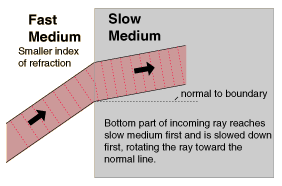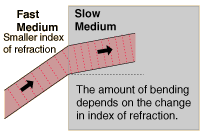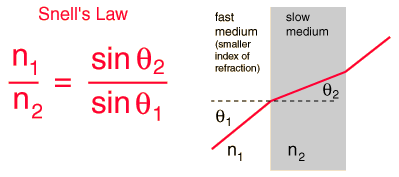Refraction of Light
Refraction is the bending of a wave when it enters a medium where it's speed is different. The refraction of light when it passes from a fast medium to a slow medium bends the light ray toward the normal to the boundary between the two media. The amount of bending depends on the indices of refraction of the two media and is described quantitatively by Snell's Law.
|
Refraction is responsible for image formation by lenses and the eye. | 
|
As the speed of light is reduced in the slower medium, the wavelength is shortened proportionately. The frequency is unchanged; it is a characteristic of the source of the light and unaffected by medium changes.
| Refraction and the eye | Refraction of sound |
| Refraction of light by water |
Lens concepts
| HyperPhysics***** Light and Vision | R Nave |



